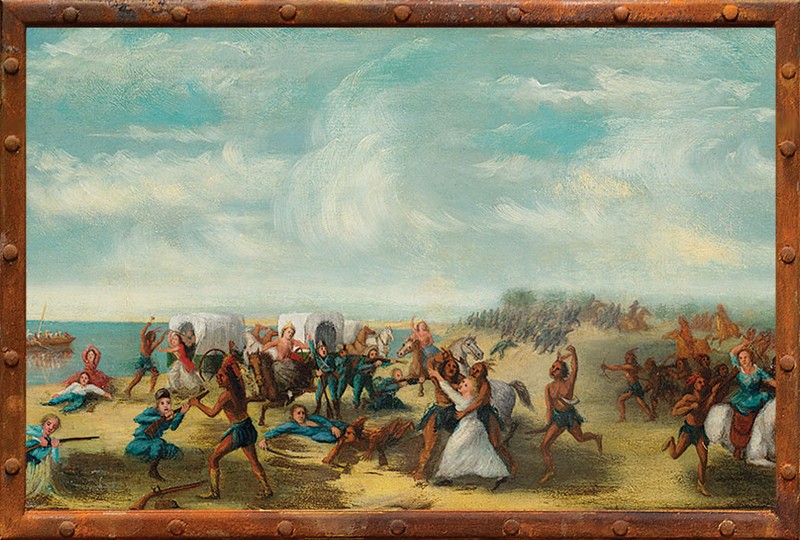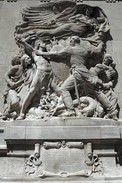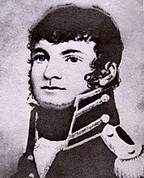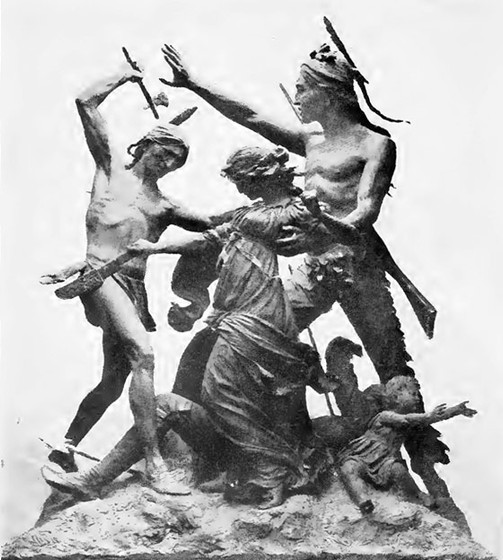Battle of Fort Dearborn
Introduction
Text-to-speech Audio
Images
A depiction of the battle. When the battle was done 52 lay dead and 41 were taken into captivity.

"Defense" - a sculpture created by Henry Hering to commemorate the event. The sculpture depicts an officer from the Fort fighting with some Potawatomie warriors while an allegorical angel surveys the scene from above.

U.S. Army commander William Hull ordered the evacuation of Fort Dearborn.

Sculpture from the Fort Dearborn Massacre, Monument by Carl Rohl-Smith (1893). The sculpture portrays the rescue of Margaret Helm by Potawatomi chief Black Partridge.

Backstory and Context
Text-to-speech Audio
Fort Dearborn was built on the southeast bank of the Chicago River, close to where it empties into Lake Michigan, in 1803. It was named after the Secretary of War, Henry Dearborn. Fort Dearborn had been built at the request of General Anthony Wayne, officer, statesman, and member of the United States House of Representatives.
Around the Great Lakes were scattered a number of nomadic tribes—the Potawatomie, the Fox, the Sauk, the Shawnee, and the Ho-Chunks, to name just a few—as well as some French trading posts and a few American forts. There were also the British, with their own forts just north of Detroit, in Canada, as well as traders and subjects of the crown living throughout the region. With Fort Wayne, the closest US garrison, sitting a long 150 miles east, Fort Dearborn was very much alone on the edge of Indian Country.
The attack at Fort Dearborn was part of the War of 1812, between the British and the Americans. The war between the British and the Americans started because of complicated issues. Some were issues that had not been settled during the Revolutionary War. Some had to do with trade, and still others with who owned the land. Many Native Americans in the area around the Great Lakes, on the border between Canada and the United States, took the side of the British in the war. This was very bad for the settlers in Illinois. What happened at Fort Dearborn is an example of just how bad it was. The British still hoped to end American independence, and the Native Americans hoped that a British victory would force the settlers off their homeland. The war ended in 1815, and neither side really won. They had tried to fight in too many places with too few men. Life worsened for the Native Americans.
From 1803 until 1812, life at the fort and the nearby settlement was fairly quiet. Things changed in August 1812. The British captured a nearby fort, and that frightened the settlers at Fort Dearborn. Captain Nathan Heald of Fort Dearborn was ordered by commander William Hull to evacuate and leave the strongly built fort and take the settlers to Fort Wayne, a larger and better defended fort. Shortly afterward, the scout William Wells arrived with 30 Miami warriors to escort the garrison. By then, the fort was surrounded by hundreds of Potawatomie and other Indians. On August 15, just after leaving the Fort, the inhabitants of Fort Dearborn only made it a mile and a half before they were attacked by over 400 Potawatomi warriors. Many of the men, women and children were killed or taken captive. Some, like John Kinzie and his family, escaped. The next day the fort was burned to the ground. Many years passed before settlers returned to the area where the horrible event happened.
